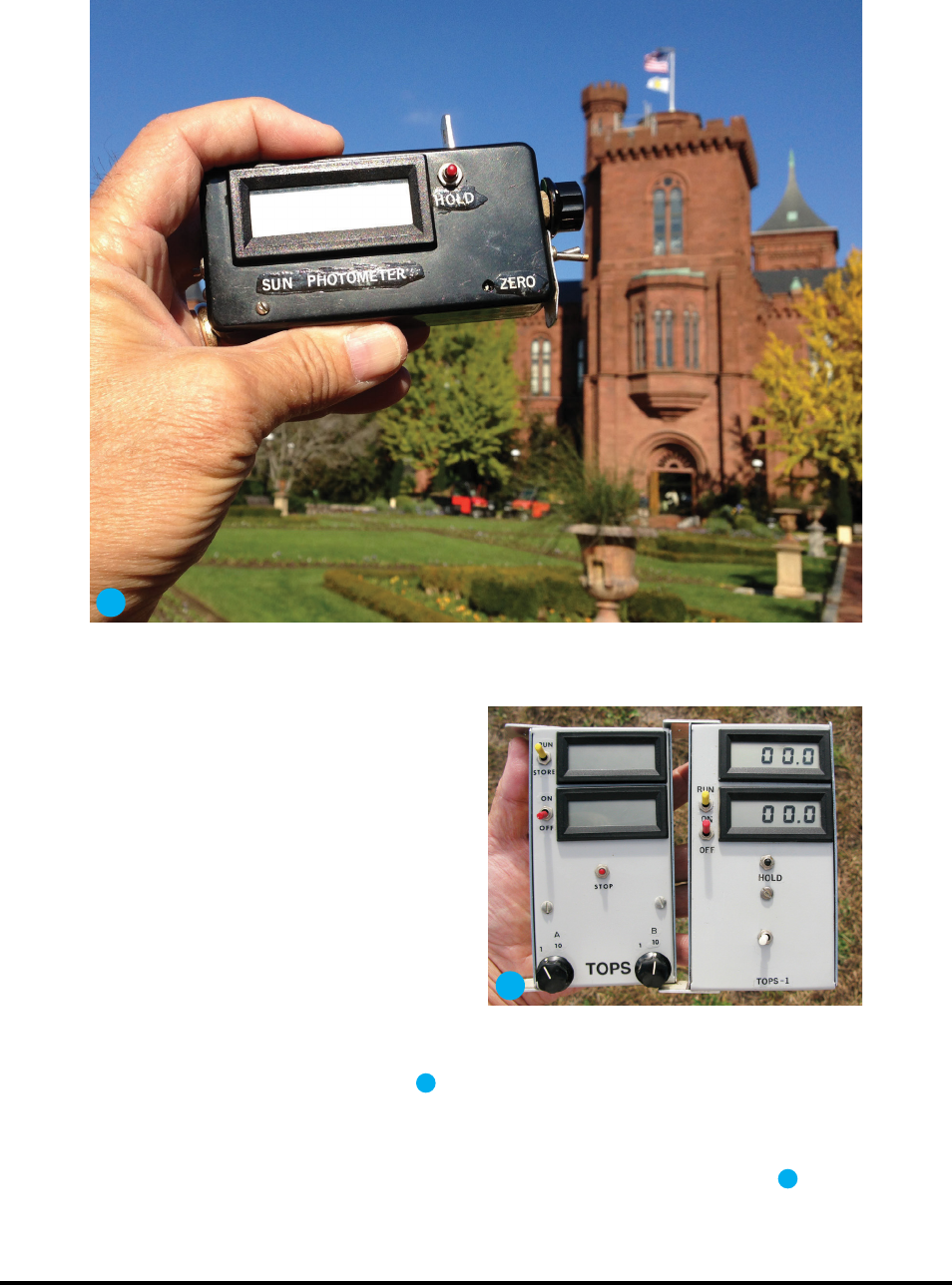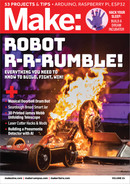
Six-channel LED sun photometer being tested where
early sun photometers were first tested behind the
Smithsonian “Castle” in 1902.
TOPS-1 and TOPS-2 found a drift in NASA’s ozone
satellite in 1993.
fiber from a helium-inflated balloon to a ground
receiver. In 1972, I discovered that LEDs can
detect light at wavelengths just below their peak
emission wavelength. I used this principle to
develop a two-way communicator that sent data
through air or an optical fiber with only two LEDs.
In 1989, Scientific American assigned me “The
Amateur Scientist” column. Only three columns
were published after the editor learned I reject
Darwinian evolution. My termination became
a national news story. It also motivated me to
prove I could do publishable science. Therefore,
I continued working on what would have
become the fourth column, a 2-channel LED
sun photometer that measured haze and total
atmospheric water vapor. I tested the original
and a 6-channel version behind the Smithsonian
“Castle” in Washington, D.C., where such
measurements were begun in 1902 (Figure
D
).
The optical filters used in conventional sun
photometers are expensive, fragile, and degrade
over time. LEDs are cheap, sturdy, and long
lasting. My original LED sun photometer, which
is still used today, played a key role in the 30-
year paper mentioned above. After I published a
formal paper on using LEDs in sun photometers,
they became used for this purpose around
the world.
Meanwhile, I developed TOPS (Total Ozone
Portable Spectrometer), a handheld instrument
that measured the ozone layer (Figure
E
).
TOPS would have been my fifth column in
Scientific American.
In 1992, the American Scientific Affiliation
105
make.co
D
E
Forrest Mims
M81_102-7_AmSci_F1.indd 105M81_102-7_AmSci_F1.indd 105 4/12/22 12:44 PM4/12/22 12:44 PM
..................Content has been hidden....................
You can't read the all page of ebook, please click here login for view all page.
